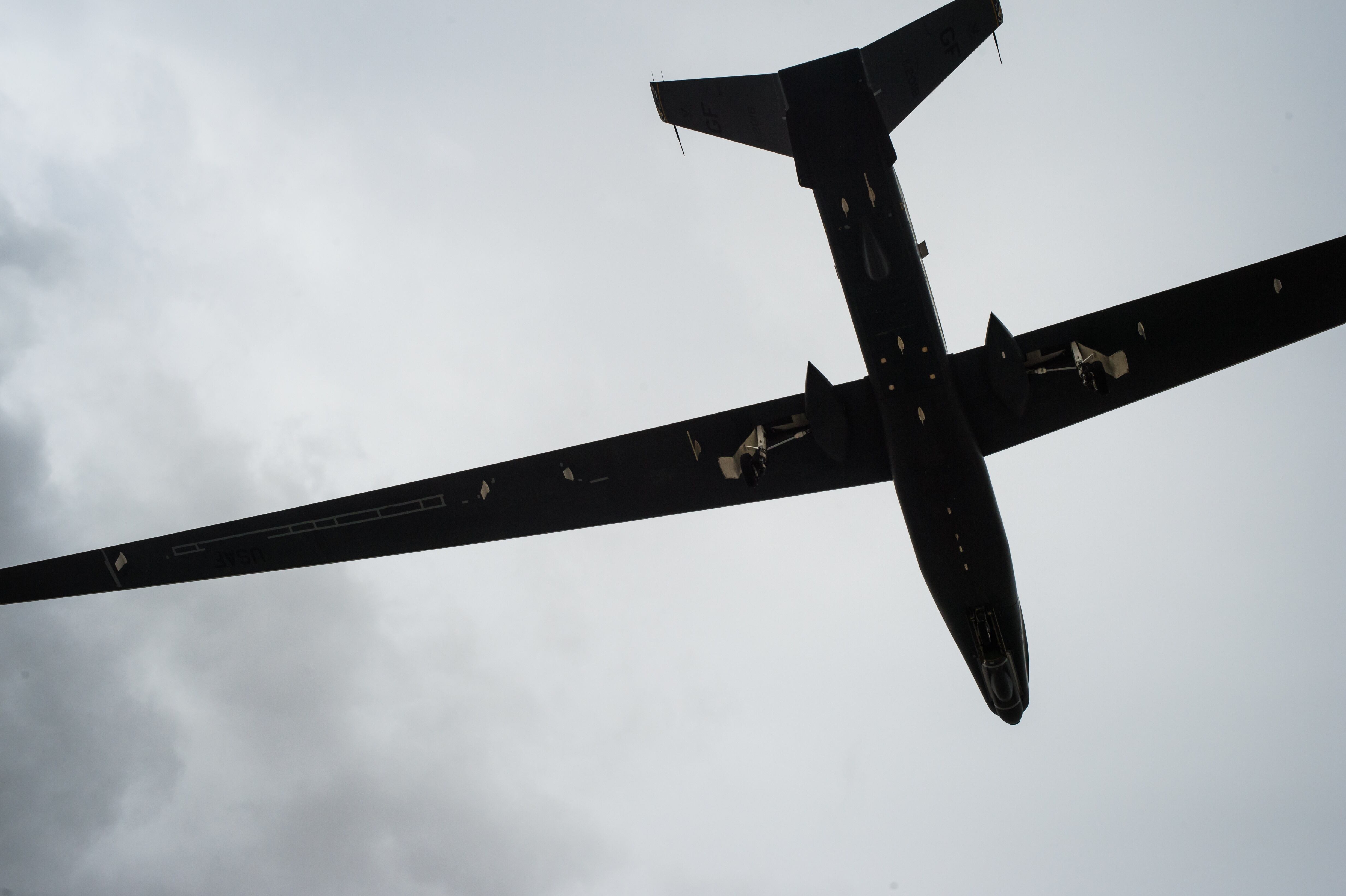WASHINGTON — Northrop Grumman has a pitch to solve communications problems between the F-35 and F-22: Put a new radio on a Global Hawk drone and have it act like a translator between the two assets.
The U.S. Air Force’s two most advanced fighter jets, the F-35 and F-22, cannot currently transmit and receive information between each other because both use different secure data links: the Multifunction Advanced Data Link, or MADL, on the F-35; and the Intra-Flight Data Link, or IFDL, on the F-22. Both MADL and IFDL allow for stealthy communication that has a low probability of detection, but that information cannot be transferred to aircraft using different waveforms.
Northrop’s proposed fix involves integrating its Freedom 550 radio aboard the RQ-4 Global Hawk UAV — which is already used as a communications node in the Middle East and elsewhere — thus providing a near-term way to allow both jets to talk to each other, said Mike Lyons, the company’s head of Global Hawk business development.
“We’ve got a solution that we’ve identified and made a pitch to the Air Force. We’re just waiting for the requirements to basically say: ‘Go do [that],’ ” he said during an interview at Northrop’s facilities in Palmdale, California.
The F-35 and F-22’s inability to share data with each other has been a longstanding issue that the Air Force has been grappling with for some time. At one point, the service planned to retrofit its F-22s with MADL, but the program was canceled early this decade. However, as the F-35 becomes a more substantial part of the Air Force’s inventory, finding a communications gateway between fifth- and fourth-generation fighters is becoming a bigger priority.
Lyons told Defense News he expects the Air Force to release a joint urgent-operational-needs statement sometime over the next six months, and that a Freedom 550-equipped Global Hawk would likely be Northrop’s offering.
The Freedom 550 is a multichannel, software-defined radio that shares data from MADL and IFDL through J-series messages via Link 16, according to Northrop. It can also link fifth-generation fighters like the F-35 and F-22 with fourth-gen jets like the F-15 and F-16.
“It has the ability to pull the fifth-gen comms — the secured comms — and then it can bridge it over to an unsecured network, if you want, like Link 16 or SADL” Lyons said, using an acronym for the situational-awareness data link. “It allows those secure comms to talk to each other, because right now they can’t.”
Northrop has demonstrated the Freedom 550 in a series of simulated and live exercises between fourth- and fifth-gen fighter jets, but never with F-35s and F-22s in a live environment or using the Global Hawk as a communications relay.
Earlier this year, the company partnered with the British Royal Air Force on a two-week trial called Babel Fish III that used the Freedom 550 to allow F-35Bs to talk with Eurofighter Typhoons, which operate over the Link 16 network. The F-35 also operates Link 16 and can pass data directly through that link, but MADL-specific data cannot be transmitted.
RELATED

So why use the Global Hawk?
The Air Force regularly flies an EQ-4 configuration of the Global Hawk for communications relay purposes. Instead of being outfitted with electro-optical/infrared sensors and radar like a typical RQ-4 used for surveillance, the EQ-4 carries the battlefield airborne communications node, which links surface and air operators on different networks — particularly useful in rough or mountainous terrain, where it’s often difficult to retain connectivity.
“We’ve had missions where the Navy won’t fly if this is not up and flying, because it’s the only way they can talk to their ships from their airplanes,” Lyons said.
Global Hawks are long-endurance, high-altitude UAVs can spend nearly 34 hours in the air. However, there is still space in the EQ-4’s payload bay for additional communications systems like the Freedom 550, Lyons added.
The scope of the Air Force’s joint urgent-operational-needs statement is still to be determined, but it’s possible that others besides Northrop could come forward with their own technology. For instance, Boeing has developed a data link pod called Talon HATE designed to be carried by the F-15. In May, the company proved that two F-15Cs equipped with the Talon HATE pod could communicate with F-22s.
Valerie Insinna is Defense News' air warfare reporter. She previously worked the Navy/congressional beats for Defense Daily, which followed almost three years as a staff writer for National Defense Magazine. Prior to that, she worked as an editorial assistant for the Tokyo Shimbun’s Washington bureau.








